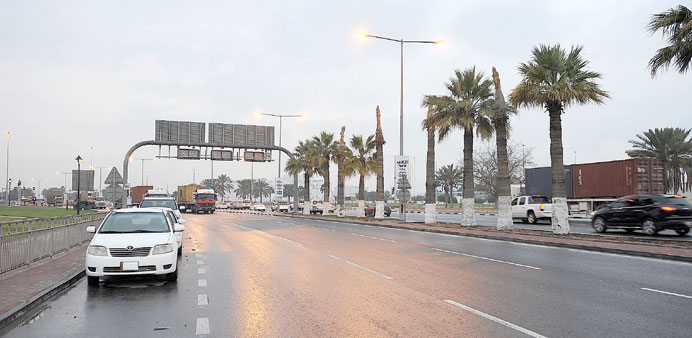By Steff Gaulter
It’s already March and the weather is now warming up in Qatar. This year it stayed cool a little longer than most years. If you were here last year, you may remember that the winter was extremely mild and it never really got cold. This year, however, was rather different and some of my friends were still using their heaters into the last week of February.
In March, there shouldn’t be any need for heaters. In fact, mine have already gone into the cupboard, to wait for next winter. The third month of the year usually brings us weather that is warm, but not too hot. The average maximum in March is 27oC (81oF) and the minimum is 17oC (63oF). If weather could be like this year-round, I would be very happy! Unfortunately, although the temperatures may be spot on, the weather isn’t always so accommodating. We could have the occasional day with fog or rain, but March is also the time of year when we usually see a few sandstorms. In fact, in some years there can be more than just a few.
March 2012 was a particularly bad year. On 10 separate days the visibility was reduced to 3km (two miles) or less, thanks to some rather persistent sandstorms.
That’s nearly one in three days ruined by dust! Haze and dust are perpetual problems in Doha, but there are two very different types. On one hand there is the dust that can sit, unmoved over the city for days, and on the other, there are the violent sandstorms that rage across the city like an angry bull, blasting grit into your face and covering everything in a thick film of dust.
Home-grown pollution in Doha is usually caused by construction dust or car exhaust. This lingers in the air until a wind finally blows in to clear it, or rain washes it out of the atmosphere. Every city produces a certain amount of pollution, but some cities find it far more difficult to clear the air than others.
In Doha we have a certain geographical advantage in that Qatar is flat. This means that a clearing wind can come from any direction, unlike it can in Los Angeles or Beijing. These cities are mostly surrounded by mountains, meaning the pollution can only be cleared when the wind comes from a specific direction.
Gentle in-house pollution is one thing, but violent sandstorms are something else altogether. These force their way across the skies, blowing sand in your eyes and sandblasting your skin. They can be more than just an inconvenience, and can ground flights, close shipping ports and bring down powerlines.
If your home has windows that don’t fit perfectly, you can often taste sandstorms before you even open your eyes in the morning. Once you do open your eyes, the room will be darker than it usually would be. This is not only because the sun is partially obscured by particles, but also because everything outside appears yellow, orange or red. The first dust storm I saw was bright yellow, which came as quite a surprise to me.
The colour comes from the way that the dust particles interact with sunlight. If the dust particles are big enough, then the atmosphere will appear to be the same colour as the actual particles themselves, but if the particles are very small then the sun’s rays will be scattered.
This is the same process that happens during a sunset, so it makes sense that a sandstorm should tinge the air with the same russet colours that are seen during a sunset.
Sometimes you can see the storm coming. A few years ago I was wake boarding when a huge churning wall of dust approached our boat. Within seconds the day was transformed. The beautiful blue skies instantly vanished as the dust rolled over us, the winds picked up and the temperature dropped significantly.
A great revolving wall of dust like this is known as a ‘haboob’, which comes from the Arabic word haab, meaning wind or blow. It is a vast, daunting sight, up to 100km (60 miles) across and 1000m (3000ft) high. These are not as uncommon as you might think and are not only seen across the Arabian Peninsula, but also in Northern Africa and in the southern desert states of the US. Phoenix, Arizona sees about three haboobs every year.
Haboobs are often generated by thunderstorms. Air rises and falls quickly within and surrounding thunderstorm clouds. Ahead of the storm, the wind flows downwards, out of the cloud and towards the ground. If there is enough dust and that dust is dry, then this wind can kick up immense quantities of dust. As the storms race across the landscape, so do the haboobs, usually moving between 30 and 60kph (20 to 40 mph).
Sometimes as the haboob rages, the thunderstorms will collapse and not produce any rain, but at other times the thunderstorm may still be active. The rain effectively washes the sand out of the atmosphere, ensuring that the dust storm is short-lived. However, although the rain may clear the air, it certainly doesn’t clean your car! The rain will coat everything in a film of gooey sand.
Unfortunately there is no way to forecast exactly how many dust storms there are likely to be in the month of March. Long range forecasts have a long way to go before this is possible. All we can do is cross our fingers, and hope for blue skies.



